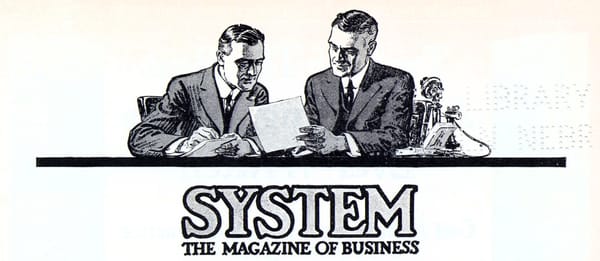Disconnected improvement events fail. What to do about that
Instead of drawing a box around the problem, tether it to something important.

Most continuous improvement events fail. The longer I do this, the more I study the reasons why.
Today’s reason for failure is disconnectedness.
Earlier in my consulting days, I’d say “yes” to any one-off continuous improvement project that came my way—things like sitting with a new group to do an A3, or a hosting a half-day kaizen (improvement) event. I figured that if some folks had a problem to fix and a sponsor willing to open space for them to work things out, it couldn’t possibly hurt, and might even help.
The events themselves were always fun. It’s fun to gather people together for a few hours and enable them to learn from each another in surprising ways. It’s fun to go where the work gets done and notice weird things happening there, to fix problems, to enjoy snacks and coffee and the company of others.
But I became dissatisfied with the success rate. Here’s what happened:
- Sometimes the events worked.
Ideas arose, people made changes, the changes stuck. - Sometimes they sort of worked.
Maybe there was a short-term change for the better, but then things reverted back to the way they were before. - Sometimes they didn’t work at all.
Only some of the improvements and ideas that come out of those events stuck over time.
It’d be absurd to expect all of them to.
Everything is interdependent. We’re all connected. To pick up a particular piece of the muddle and draw a tidy rectangle around it and work on it in isolation is to miss nearly everything.
Disconnected improvements—the wrong way
My least favorite kind of continuous improvement activities these days are those that are totally atomized into sealed, useless little containers.
Two examples:
- My local medical system had this unhealthy campaign where they exhorted employees to find improvements within their “sphere of influence,” e.g. nothing involving anything anywhere else up or down the value chain, and with no support, no budget, etc. What a perfect ossifying, inane waste of time.
- A local giant software company calls it “reducing toil.” This is literally unhinged, as in, not connected to anything. Now, Bucky Fuller’s formulation of “doing more and more with less and less until eventually you can do everything with nothing” is one I can get behind. But to instruct or be instructed to “reduce toil” is pointless. It implies that there is a huge backlog of useless work that people are doing for no reason at all, and that all of it could be excised if only employees were more individually attentive and generically more capable. Inside giant organizations, you will find these infinite sequences of no-value bullshit work that people do all day. They exist because because they were produced by management, over time. They can be unwound or removed only the same way. Merely “reducing toil” makes my blood boil.
Connecting improvements—the right way
Ideally, specific lean interventions are part of the daily work. In one classic formulation: Work = Job + Kaizen. Ideally, they are supported by leadership through a lean management system. Ideally, they are broadly understood and intelligible by passersby within and without the organization.
Connecting improvements—the “strongly OK” way
But if that condition does not exist (it very rarely does), then what? Should you say “no” to everything? Or say “yes” to everything and hope that some of it sticks?
My move, and it’s a pragmatic or “strongly OK” move, is to connect continuous improvement activities to something that is already valued and understood by the organization. This connection is what you can establish at the outset, and cling to after an event is over.
It’s the hook you hang the continuous improvement hat on.
In our “strongly OK” world, connect continuous improvement projects to (from most to least preferred)…
- Safety, quality, or satisfaction—for customers, employees, or suppliers. Must be quantifiable.
- Business value—show how the current condition is costing the company money. Must be quantifiable, and something that is already familiar and meaningful to people.
- A executive’s important initiative. But initiatives don’t last long, even the important ones, and some people will not be on board. This is a weaker connection than it might seem.
- The organization’s mission, vision, or strategic plan. These things probably exist under a thick layer of dust. They’ll motivate continuous improvement to the same extent they motivate anything else in the organization—which is to say, in the typical case, very little. If your organization is the exceptional one, great, move this up to the top of the list.
By connecting a continuous improvement event to one of these, and making that connection strong and broadly communicated, you increase the odds that the event—or its results—won’t drift away in the wind.



